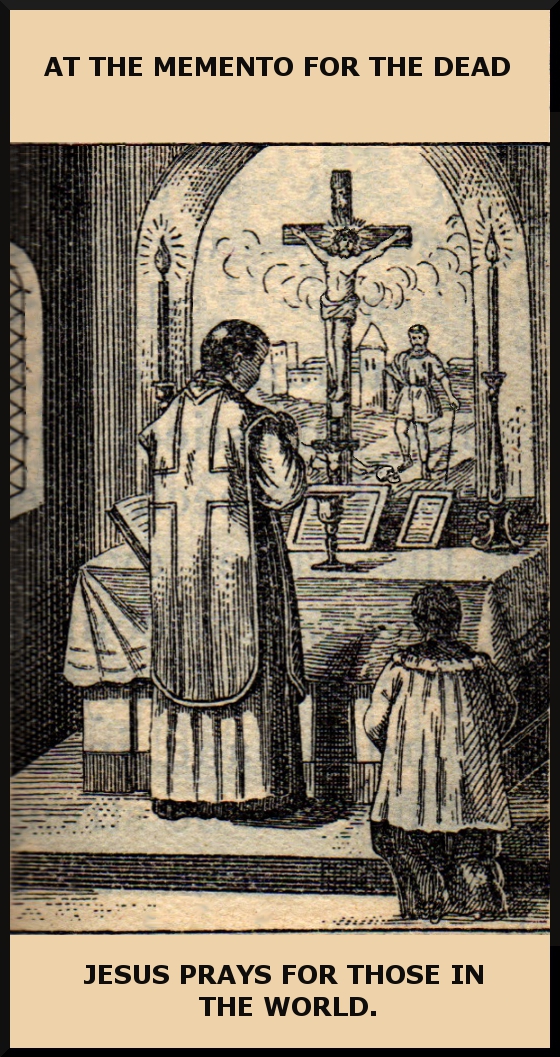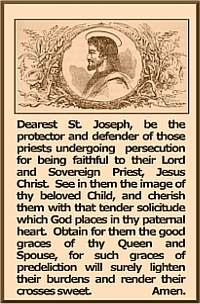Our Blessed Lord offers the chalice of His sufferings in propitiation for the sins of the world. It is particularly through his anguish of desolation and privation – of feeling forsaken even by His Father – that He merited for souls the grace to overcome the sense of despair which would assail them at the moment of death.
In the memento for the dead, stress is put upon the fact that the faithful departed were taken from this world bearing the mark of faith. Gihr says, “By the sign of faith is here to be understood, in the first place, the indelible character imprinted on the soul in the Sacrament of Baptism…whereby the faithful are distinguished from the unbelievers [those of the world]… profession of faith is also to be understood…by word and deed, [and] reception of the Sacraments.” The Church prays that the weary pilgrim on earth, having been freed from the perils of eternal damnation, which all of us encounter in the world, may now rest in peace and joy.
At the conclusion of the formula “Through the same Christ our Lord”, the priest not only joins his hands but also bows his head. This inclination of the head, Gihr says, must have a mystical signification: “When dying, Christ bowed his head on the cross and then descended into the depths of the kingdom of the dead, there to console the devout…and deliver them from their captivity. This the priest would now call to mind by bowing his head.”
Prayer: “Lord Jesus Christ, Who hanging on the Cross, didst pray to Thy Father for all mankind, even Thy executioners; grant, I beseech Thee, that Thou contend mercifully with the infidelities of souls, who now wholly repentant, didst abuse Thy grace. I supplicate Thee especially for those souls nearest entering heaven; for those most forgotten; for those I have known in life. Accompanied by Thy angels, may they finally arrive in the Heavenly Jerusalem to enjoy Thy Supreme Goodness. And may their prayers assist me in my weakness, so that with them, I might also possess Thee and love Thee for all eternity. Amen”
++++
Compare the text of the TLM with that of the N.O. in the memento for the dead, and notice the doctrinal impoverishment and ambiguity of the text for the New Mass. For example: “Remember our brothers and sisters who have gone to their rest in the hope of rising again…”.
TLM: “Be mindful, also, O Lord, of Thy servants N. and N., who have gone before us with the sign of faith and who sleep the sleep of peace…”
Notice that in the N.O. the deceased are merely “our brothers and sisters”, while in the TLM, they are referred to as the servants of the Lord. Also, unlike in the N.O., it is noted that they have been marked with the sign of faith, i.e., the indelible baptismal character which not only makes the faithful servants of the Lord, but also children of God.




